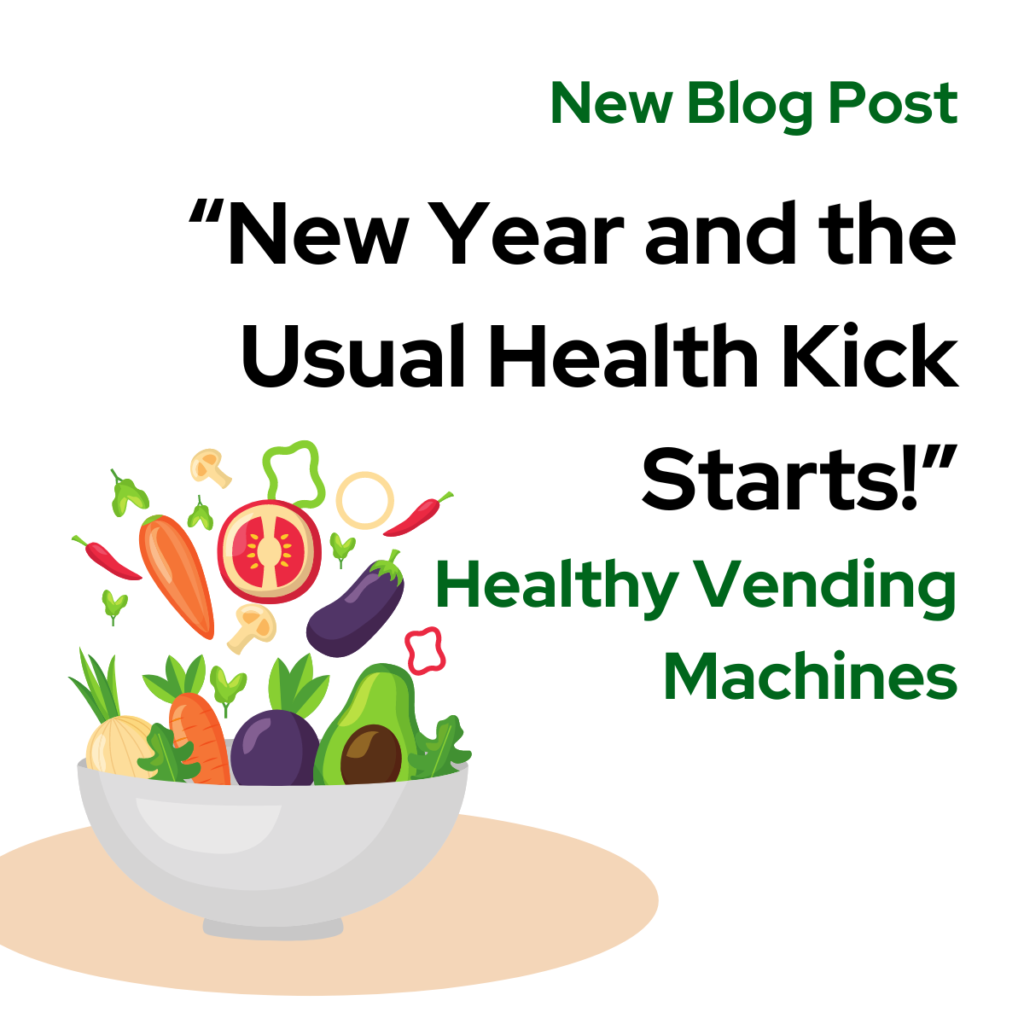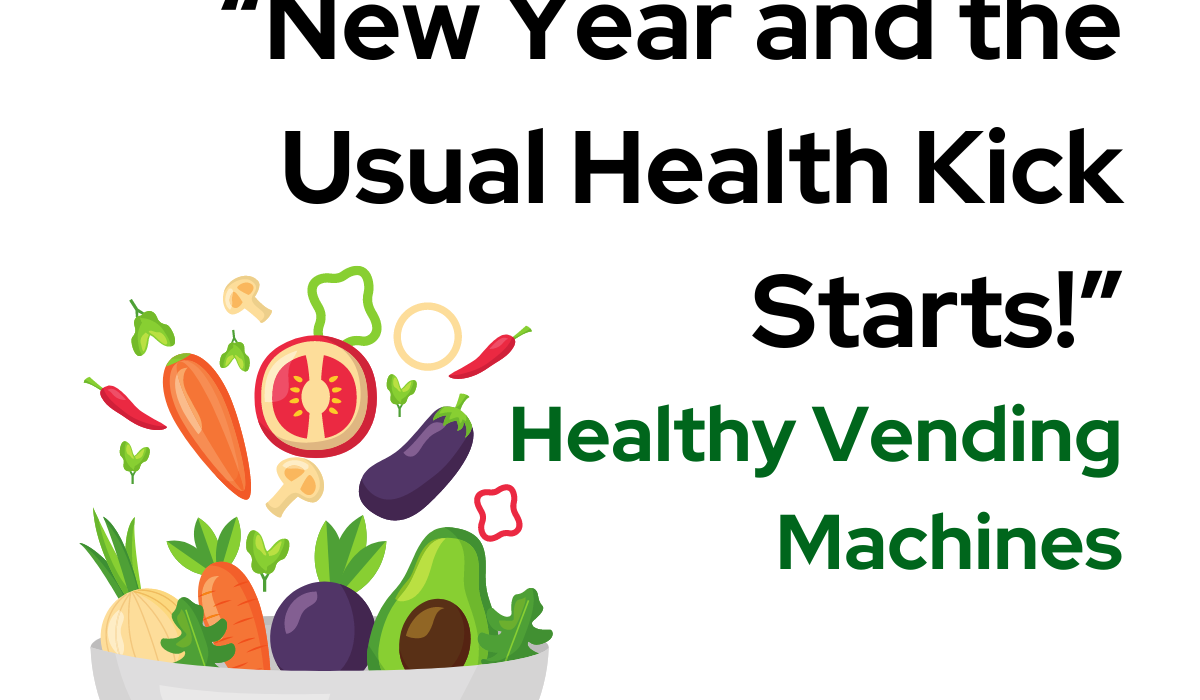
As the New Year rolls around, it’s not uncommon for people to embark on a health kick, motivated by resolutions to eat better, exercise more, and generally lead a healthier lifestyle. While gyms see an influx of new members and grocery stores stock up on health foods, another area of interest that’s gaining traction is the concept of healthy vending machines. These machines, which offer nutritious alternatives to the typical snacks and drinks found in traditional vending machines, are becoming increasingly popular in workplaces, schools, and public spaces. In this blog post, we’ll explore the rise of healthy vending machines, the benefits they offer, and how they align with the New Year’s health kick trend.
1. The Shift Towards Healthier Choices
The trend towards healthier eating is not new, but it has gained significant momentum in recent years. As awareness of the links between diet and health has grown, more people are seeking out nutritious options that support their well-being. This shift in consumer preferences has created a demand for healthier alternatives in all areas of life, including vending machines.
- Nutritional Awareness: Today’s consumers are more informed than ever about the impact of their dietary choices on their health. With the rise of nutritional labelling and public health campaigns, people are increasingly aware of the importance of a balanced diet and the risks associated with consuming too much sugar, fat, and processed foods.
- Dietary Trends: The popularity of specific dietary trends, such as plant-based eating, low-carb diets, and gluten-free products, has also contributed to the demand for healthier vending machine options. Consumers are looking for snacks and drinks that align with their dietary preferences and restrictions.
- Workplace Wellness: Employers are recognising the importance of promoting healthy habits among their employees. Healthy vending machines are becoming a common feature in workplaces as part of broader wellness initiatives aimed at improving employee health and productivity.
2. What Are Healthy Vending Machines?
Healthy vending machines differ from traditional vending machines in that they are stocked with items that are lower in sugar, fat, and calories, and often contain more natural ingredients. These machines offer a range of nutritious options, including:
- Fresh Fruit and Vegetables: Some healthy vending machines offer fresh produce, such as apples, bananas, carrots, and salads, providing convenient access to healthy snacks that are rich in vitamins and minerals.
- Low-Calorie Snacks: Instead of crisps and chocolate bars, healthy vending machines might offer snacks like rice cakes, whole-grain crackers, or protein bars that are lower in calories and made from wholesome ingredients.
- Nuts and Seeds: Nuts and seeds are popular options in healthy vending machines, offering a good source of healthy fats, protein, and fibre. These snacks are often available in single-serve packets, making them a convenient choice for on-the-go consumers.
- Yoghurt and Dairy Alternatives: Some machines offer dairy products like yoghurt, as well as plant-based alternatives such as almond or soy milk, catering to those who are lactose intolerant or prefer a vegan diet.
- Healthy Beverages: Instead of sugary soft drinks, healthy vending machines often stock beverages like bottled water, coconut water, herbal teas, and low-sugar or sugar-free drinks. These options provide hydration without the excess sugar and calories found in traditional sodas.
3. Benefits of Healthy Vending Machines
The rise of healthy vending machines is driven by the numerous benefits they offer, both to consumers and the organisations that provide them.
- Promoting Health and Well-being: By offering healthier options, vending machines can play a role in promoting better dietary habits. This is particularly important in environments like schools and workplaces, where access to nutritious snacks can help support concentration, energy levels, and overall well-being.
- Supporting New Year’s Resolutions: Many people start the New Year with resolutions to eat healthier, and having access to healthy vending options can make it easier to stick to these goals. Whether it’s choosing a piece of fruit over a chocolate bar or opting for a low-calorie drink instead of a sugary soda, healthy vending machines provide convenient options that align with these resolutions.
- Encouraging Mindful Eating: Healthy vending machines often feature snacks that are portion-controlled, helping consumers manage their calorie intake more effectively. This can support mindful eating practices, where individuals are more aware of what they’re consuming and make choices that contribute to their long-term health goals.
- Reducing Sugar and Processed Food Intake: Traditional vending machines are often stocked with items that are high in sugar and heavily processed. By providing healthier alternatives, vending machines can help reduce the intake of these less nutritious foods, which are linked to various health issues such as obesity, diabetes, and heart disease.
4. Implementation in Different Settings
Healthy vending machines are becoming increasingly popular in a variety of settings, each with its own unique benefits and challenges.
- Workplaces: In the workplace, healthy vending machines are often part of broader wellness programmes aimed at improving employee health and productivity. By providing nutritious snacks and drinks, employers can help their staff maintain energy levels throughout the day, reduce absenteeism, and create a healthier work environment.
- Schools and Universities: In educational settings, healthy vending machines support the health and well-being of students by offering nutritious options that can fuel their learning. Many schools and universities have introduced healthy vending machines as part of efforts to comply with nutritional guidelines and promote healthy eating habits among students.
- Hospitals and Healthcare Facilities: In hospitals and healthcare facilities, healthy vending machines provide patients, visitors, and staff with access to nutritious snacks and drinks. This is particularly important in environments where good nutrition is a key component of health and recovery.
- Public Spaces: Healthy vending machines are also being installed in public spaces such as gyms, community centres, and transportation hubs. These machines offer convenient access to healthy options for people on the go, supporting their health and well-being even when they’re away from home.
5. Challenges and Considerations
While healthy vending machines offer many benefits, there are also challenges and considerations to keep in mind when implementing them.
- Cost: Healthy snacks and drinks often come at a higher price point than traditional vending machine items. This can be a barrier for some consumers, particularly in settings where cost is a significant factor. Businesses and organisations need to consider how to price items competitively while still covering costs.
- Stock Management: Maintaining fresh and varied stock in healthy vending machines can be more challenging than with traditional vending machines. Items like fresh fruit and vegetables have a shorter shelf life and require more frequent restocking. Effective stock management is essential to ensure that the machine is always stocked with fresh, appealing options.
- Consumer Demand: While there is growing demand for healthier options, not all consumers may be interested in purchasing items from healthy vending machines. It’s important to balance the availability of healthy options with traditional offerings to cater to a wider range of preferences.
- Education and Awareness: Consumers may not always be aware of the benefits of the healthier options available in vending machines. Providing information about the nutritional content of items, as well as promoting the benefits of healthier choices, can help increase uptake and encourage more mindful eating.
6. The Future of Healthy Vending Machines
The future of healthy vending machines looks promising, with continued growth expected as more consumers and organisations recognise the benefits of healthier eating options. Several trends are likely to shape the evolution of this market.
- Technological Integration: Advances in technology are likely to play a significant role in the future of healthy vending machines. For example, machines equipped with touchscreens and AI could offer personalised recommendations based on a customer’s previous purchases or dietary preferences. Additionally, mobile apps could be used to pre-order and pay for items, making the vending experience even more convenient.
- Sustainability Initiatives: As consumers become more environmentally conscious, there will likely be an increased focus on sustainability in the vending machine industry. This could include offering products with eco-friendly packaging, reducing energy consumption in machines, and implementing recycling programmes for empty containers.
- Expansion of Product Offerings: The range of products available in healthy vending machines is likely to continue expanding as new, innovative snacks and drinks are developed. This could include items tailored to specific dietary needs, such as gluten-free, vegan, or low-sugar options, as well as products that incorporate functional ingredients like probiotics or superfoods.
- Increased Accessibility: As demand for healthy options grows, we may see healthy vending machines becoming more common in a wider variety of locations, from rural areas to urban centres. This increased accessibility will make it easier for consumers to make healthy choices, no matter where they are.
As the New Year brings a renewed focus on health and well-being, healthy vending machines are emerging as a convenient and effective way to support healthier eating habits. By offering nutritious alternatives to traditional vending machine fare, these machines help consumers stick to their health resolutions and make better choices throughout the year. While there are challenges to consider, the benefits of healthy vending machines make them a valuable addition to workplaces, schools, hospitals, and public spaces. As the market continues to evolve, we can expect to see even more innovative and accessible options that make healthy eating easier and more convenient for everyone.




